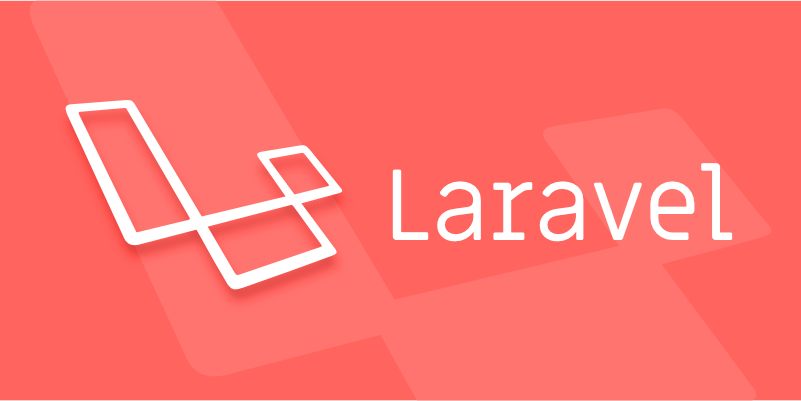How to use Livewire for building dynamic interfaces in Laravel?
Livewire is a powerful Laravel library that allows developers to build dynamic, responsive interfaces using only PHP without writing JavaScript. 1. First install Livewire through Composer and add @livewireStyles and @livewireScripts in the main layout to complete the basic setup. 2. Use the Artisan command php artisan make:livewire to create components, generate corresponding PHP classes and Blade view files, such as implementing a to-do list, and manage state and interaction through public properties and methods. 3. Use key features such as wire:model to achieve bidirectional data binding, wire:click trigger method, $refresh manual refresh of components, wire:loading display load status, and wire:model.defer delay update to optimize performance. 4. Integrate the Laravel verification mechanism in the form, use $this->validate() and display error messages through the @error directive. 5. Supports nested components and event communication, child components can dispatch events through $this->dispatch('event-name'), and parent components can listen with $wire.on('event-name') or re-render through $refresh. 6. Follow best practices, keep components small and focused, use the #[On] attribute to listen to events, avoid N 1 query problems, and implement paging functions in combination with WithPagination. To sum up, Livewire allows Laravel developers to build highly interactive front-end interfaces with familiar PHP and Blade technology stacks, greatly simplifying the full-stack development process and suitable for projects that require rapid development of dynamic functions.

Livewire is a powerful Laravel library that lets you build dynamic, reactive interfaces without leaving PHP. It eliminates the need for writing JavaScript in most cases by letting you create components that update automatically when data changes — perfect for forms, real-time lists, modals, and more.

Here's how to use Livewire effectively in Laravel to build dynamic interfaces:
✅ 1. Install and Set Up Livewire
First, install Livewire via Composer:

composer requires livewire/livewire
Then, include Livewire's styles and scripts in your main layout (usually resources/views/layouts/app.blade.php ):
<html>
<head>
...
@livewireStyles
</head>
<body>
{{ $slot }}
@livewireScripts
</body>
</html>That's it for setup — no need for API routes or JavaScript frameworks.

✅ 2. Create a Livewire Component
Use Artisan to generate a component:
php artisan make:livewire TodoList
This creates two files:
-
app/Http/Livewire/TodoList.php -
resources/views/livewire/todo-list.blade.php
Example: Simple Todo List
Component Class ( TodoList.php )
<?php
namespace App\Http\Livewire;
use Livewire\Component;
class TodoList extends Component
{
public $tasks = [];
public $task = '';
public function addTask()
{
$this->tasks[] = $this->task;
$this->task = ''; // Clear input
}
public function removeTask($index)
{
unset($this->tasks[$index]);
$this->tasks = array_values($this->tasks); // Re-index
}
public function render()
{
return view('livewire.todo-list');
}
} View ( todo-list.blade.php )
<div>
<h2>Todo List</h2>
<input type="text"
wire:model="task"
placeholder="Add a task"
wire:keydown.enter="addTask">
<button wire:click="addTask">Add</button>
<ul>
@foreach($tasks as $index => $task)
<li>
{{ $task }}
<button wire:click="removeTask({{ $index }})">Delete</button>
</li>
@endforeach
</ul>
</div>Now, every time you type and press Enter or click "Add", the list updates — no page refresh, no JavaScript callbacks.
✅ 3. Key Livewire Features for Dynamic UIs
Here are the most useful tools Livewire gives you:
? wire:model – Two-way data binding
<input wire:model="task" />
Updates the $task property in real time as the user types.
⚡ wire:click , wire:submit , etc. – DOM Event Listeners
<button wire:click="save">Save</button>
Calls the save() method in your component when clicked.
? $refresh – Force Re-render
If you need to refresh a component manually (eg, after an event):
$this->dispatch('$refresh');
Useful when data changes outside the current component.
? wire:loading – Show Loading States
<button wire:click="save">
<span wire:loading.remove>Save</span>
<span wire:loading>Saving...</span>
</button>Shows "Saving..." only during the request.
? wire:model.live or defer – Control When Updates Happen
-
wire:model.live→ Updates on every keystroke -
wire:model.defer→ Updates only when you call$this->dispatch('input')or submit
<input wire:model.defer="task" />
Great for performance when you don't need instant sync.
✅ 4. Working with Forms and Validation
Livewire integrates with Laravel's validation:
public function addTask()
{
$this->validate([
'task' => 'required|min:3'
]);
$this->tasks[] = $this->task;
$this->task = '';
}Display errors in the view:
@error('task')
<span class="error">{{ $message }}</span>
@enderror You can also use wire:target to show loading spinners during specific actions.
✅ 5. Advanced: Nested Components and Events
You can break complex UIs into smaller components.
Example: Emit and Listen to Events
In a child component:
$this->dispatch('task-added', title: $this->task);
In the parent:
<livewire:task-list />
@script
<script>
$wire.on('task-added', (event) => {
alert('New task: ' event.title);
});
</script>
@endscript Or use $refresh on a parent component when a child updates.
✅ 6. Best Practices
Keep components small and focused (eg,
SearchUsers,EditModal)Use
#[On]attribute to listen to events:#[On('post-deleted')] public function handlePostDeleted() { $this->posts = Post::all(); }Avoid N 1 queries — eager load relationships in
mount()orrender()Use
WithPaginationfor paginated lists:use Livewire\WithPagination; class PostList extends Component { use WithPagination; public function render() { return view('livewire.post-list', [ 'posts' => Post::latest()->paginate(10) ]); } }
Livewire lets you build rich, interactive interfaces using only PHP and Blade. It's ideal for Laravel developers who want reactivity without the complexity of a full frontend framework.
Basically, if you can write a Laravel controller, you can write a Livewire component.
The above is the detailed content of How to use Livewire for building dynamic interfaces in Laravel?. For more information, please follow other related articles on the PHP Chinese website!

Hot AI Tools

Undress AI Tool
Undress images for free

Undresser.AI Undress
AI-powered app for creating realistic nude photos

AI Clothes Remover
Online AI tool for removing clothes from photos.

Clothoff.io
AI clothes remover

Video Face Swap
Swap faces in any video effortlessly with our completely free AI face swap tool!

Hot Article

Hot Tools

Notepad++7.3.1
Easy-to-use and free code editor

SublimeText3 Chinese version
Chinese version, very easy to use

Zend Studio 13.0.1
Powerful PHP integrated development environment

Dreamweaver CS6
Visual web development tools

SublimeText3 Mac version
God-level code editing software (SublimeText3)
 What is Configuration Caching in Laravel?
Jul 27, 2025 am 03:54 AM
What is Configuration Caching in Laravel?
Jul 27, 2025 am 03:54 AM
Laravel's configuration cache improves performance by merging all configuration files into a single cache file. Enabling configuration cache in a production environment can reduce I/O operations and file parsing on each request, thereby speeding up configuration loading; 1. It should be enabled when the application is deployed, the configuration is stable and no frequent changes are required; 2. After enabling, modify the configuration, you need to re-run phpartisanconfig:cache to take effect; 3. Avoid using dynamic logic or closures that depend on runtime conditions in the configuration file; 4. When troubleshooting problems, you should first clear the cache, check the .env variables and re-cache.
 How to mock objects in Laravel tests?
Jul 27, 2025 am 03:13 AM
How to mock objects in Laravel tests?
Jul 27, 2025 am 03:13 AM
UseMockeryforcustomdependenciesbysettingexpectationswithshouldReceive().2.UseLaravel’sfake()methodforfacadeslikeMail,Queue,andHttptopreventrealinteractions.3.Replacecontainer-boundserviceswith$this->mock()forcleanersyntax.4.UseHttp::fake()withURLp
 How to implement a referral system in Laravel?
Aug 02, 2025 am 06:55 AM
How to implement a referral system in Laravel?
Aug 02, 2025 am 06:55 AM
Create referrals table to record recommendation relationships, including referrals, referrals, recommendation codes and usage time; 2. Define belongsToMany and hasMany relationships in the User model to manage recommendation data; 3. Generate a unique recommendation code when registering (can be implemented through model events); 4. Capture the recommendation code by querying parameters during registration, establish a recommendation relationship after verification and prevent self-recommendation; 5. Trigger the reward mechanism when recommended users complete the specified behavior (subscription order); 6. Generate shareable recommendation links, and use Laravel signature URLs to enhance security; 7. Display recommendation statistics on the dashboard, such as the total number of recommendations and converted numbers; it is necessary to ensure database constraints, sessions or cookies are persisted,
 How to run a Laravel project?
Jul 28, 2025 am 04:28 AM
How to run a Laravel project?
Jul 28, 2025 am 04:28 AM
CheckPHP>=8.1,Composer,andwebserver;2.Cloneorcreateprojectandruncomposerinstall;3.Copy.env.exampleto.envandrunphpartisankey:generate;4.Setdatabasecredentialsin.envandrunphpartisanmigrate--seed;5.Startserverwithphpartisanserve;6.Optionallyrunnpmins
 How to seed a database in Laravel?
Jul 28, 2025 am 04:23 AM
How to seed a database in Laravel?
Jul 28, 2025 am 04:23 AM
Create a seeder file: Use phpartisanmake:seederUserSeeder to generate the seeder class, and insert data through the model factory or database query in the run method; 2. Call other seeder in DatabaseSeeder: register UserSeeder, PostSeeder, etc. in order through $this->call() to ensure the dependency is correct; 3. Run seeder: execute phpartisandb:seed to run all registered seeders, or use phpartisanmigrate:fresh--seed to reset and refill the data; 4
 How to build a REST API with Laravel?
Jul 30, 2025 am 03:41 AM
How to build a REST API with Laravel?
Jul 30, 2025 am 03:41 AM
Create a new Laravel project and start the service; 2. Generate the model, migration and controller and run the migration; 3. Define the RESTful route in routes/api.php; 4. Implement the addition, deletion, modification and query method in PostController and return the JSON response; 5. Use Postman or curl to test the API function; 6. Optionally add API authentication through Sanctum; finally obtain a clear structure, complete and extensible LaravelRESTAPI, suitable for practical applications.
 How to implement feature flags in a Laravel app?
Jul 30, 2025 am 01:45 AM
How to implement feature flags in a Laravel app?
Jul 30, 2025 am 01:45 AM
Chooseafeatureflagstrategysuchasconfig-based,database-driven,orthird-partytoolslikeFlagsmith.2.Setupadatabase-drivensystembycreatingamigrationforafeature_flagstablewithname,enabled,andrulesfields,thenrunthemigration.3.CreateaFeatureFlagmodelwithfilla
 What is Eloquent ORM in Laravel?
Jul 29, 2025 am 03:50 AM
What is Eloquent ORM in Laravel?
Jul 29, 2025 am 03:50 AM
EloquentORM is Laravel's built-in object relational mapping system. It operates the database through PHP syntax instead of native SQL, making the code more concise and easy to maintain; 1. Each data table corresponds to a model class, and each record exists as a model instance; 2. Adopt active record mode, and the model instance can be saved or updated by itself; 3. Support batch assignment, and the $fillable attribute needs to be defined in the model to ensure security; 4. Provide strong relationship support, such as one-to-one, one-to-many, many-to-many, etc., and you can access the associated data through method calls; 5. Integrated query constructor, where, orderBy and other methods can be called chained to build queries; 6. Support accessors and modifiers, which can format the number when obtaining or setting attributes.







